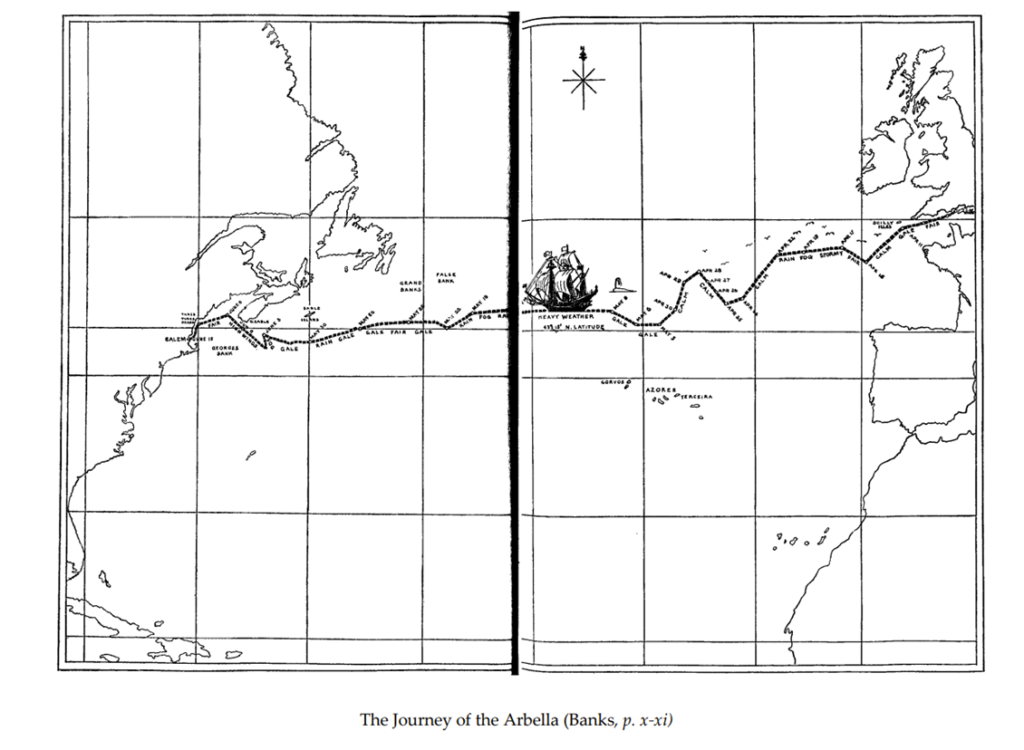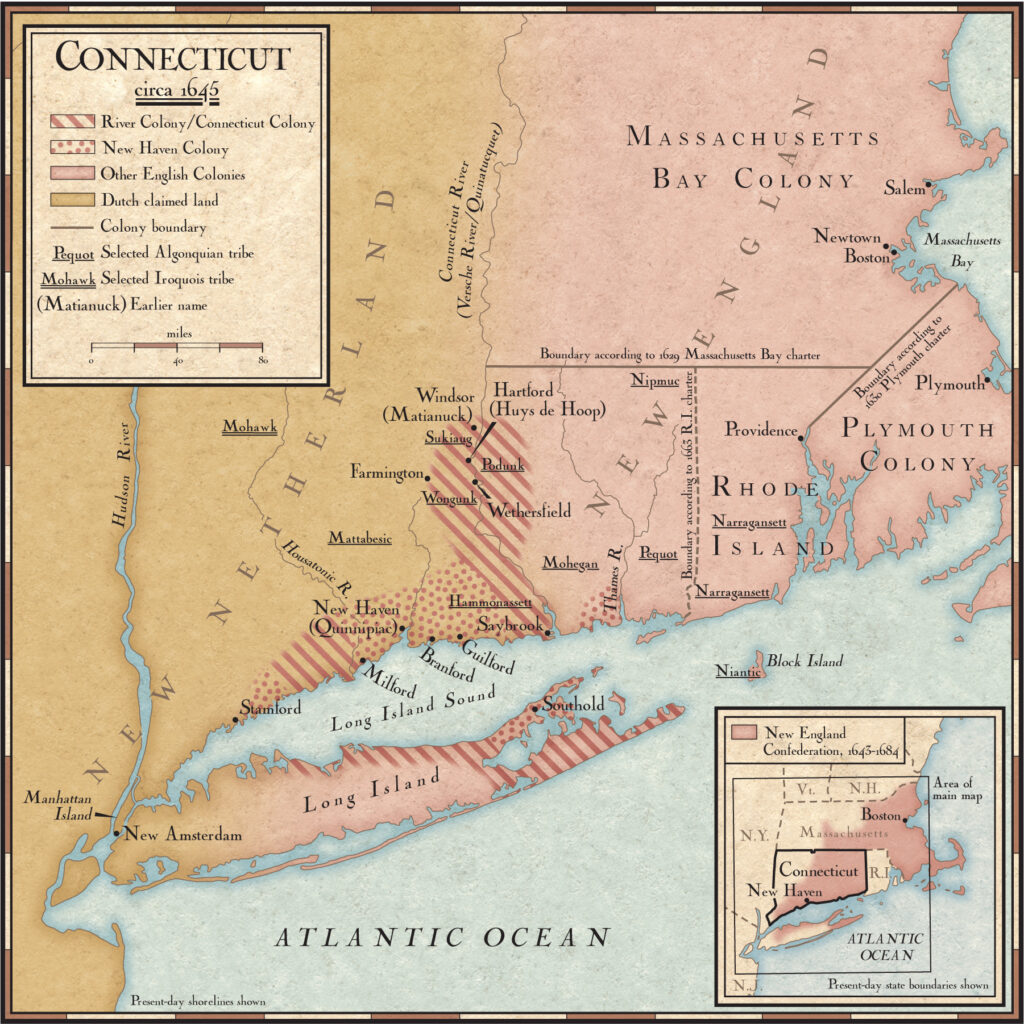In the 17th century, England was going through significant religious and political changes. A group of Protestants called Puritans believed that the Anglican Church (the official church of England) had been corrupted and needed to be reformed. Their name came from the fact that they believed that the church needed to be “purified.” Unable to reform the church themselves, they sought to set up colonies where they could build settlements based on the religious principles of Puritanism. Between 1620 and 1640, more than 20,000 people migrated to Massachusetts, mostly from eastern and midland counties of England. Known as the “Great Migration,” these “Pilgrims” came in family groups rather than as isolated individuals and were mainly motivated by freedom to practice their beliefs.
The Great Migration began with the arrival of the Mayflower in Plymouth Colony in 1620. The Mayflower left Plymouth, England in September of that year with 102 passengers and 30–40 crew, spending ten weeks at sea. The Mayflower was supposed to land in Virginia Colony, but the ship was damaged, and they were forced to land at Plymouth, in Cape Cod Bay. Shortly afterwards, 41 men signed the Mayflower Compact, establishing a form of local government in which the colonists agree to abide by majority rule and to cooperate for the general good of the colony. The Mayflower Compact remained in effect until Plymouth Colony became part of the Massachusetts Bay Colony in 1691.
Puritans in England that had resources and money formed a group called the Massachusetts Bay Company and in 1629, obtained a royal charter from King Charles I to plant a colony in New England. This company financed the journey by providing provisions and 17 ships to travel across the Atlantic. Six vessels sailed for New England in 1629 under the leadership of Reverend Francis Higginson, with 350 men women and children, livestock and provisions. They landed in Salem, Massachusetts, north of the Plymouth Colony that had been established by the Pilgrims ten years earlier.
Another Massachusetts Bay Company flotilla of 11 ships sailed from England in 1630 to Salem, carrying more than 700 colonists, led by John Winthrop in the ship Arbella. Winthrop was an ardently religious person, a full-fledged Puritan, convinced that God had elected him to salvation—or, in Puritan terms, to “sainthood.” He helped organize the colony and later served as governor.

One of our ancestors, Jane Elizabeth “Jennie” Cowles, conducted extensive research on our family lineage, assembling detailed family trees dating back to the early 1600s. Her treasured ancestry volume was composed in the early 1900s and has been passed on to future generations. It is now preserved and rests at the Bancroft Library at the University of California in Berkeley.
Jennie’s works identify at least four ancestors who journeyed to America in the “Great Migration.” These include:
Christopher Martin (1582 – 1621) was a merchant by trade and served as “treasurer agent” for the Mayflower, which included procurement of all needed goods and supplies for the voyage and provisions needed by the settlement afterwards. He along with his family traveled on the Mayflower in 1620. Upon arrival at Cape Cod, Christopher Martin was a signatory to the Mayflower Compact. In the winter of 1621 Martin, his wife and son became ill and died.
Thomas Minor (1608-1690) of Somerset, England emigrated to the New World aboard the Lyon’s Whelp, one of Winthrop’s ships. It landed in Salem, Massachusetts on June 14, 1630. minor quickly moved to Watertown and then on to Charlestown, after typhus fever broke out in Salem. In about 1653, Minor bought land west of Stonington, across Quiambaug Cove near present-day Mystic, and built a house for his family. Around this time he began one of the few diaries to survive 17th-century New England. It covers the years 1653 to 1684 and was published in book form in 1899.
Robert Walker (1607-1687) of Blackburn, Lancashire, England journeyed to colonial America in the 1630 11 ship flotilla led by John Winthrop. Because no formal record was made of which passengers sailed on which ship, it is difficult to determine which ship Robert and his wife Sarah sailed on. He was a weaver by trade. Although they landed in Salem, he and his family settled in Boston. He was one of the original founders of Boston’s Old South Church in 1669.
William Curtiss (?-1702) of Nazing County Essex, came to America with his wife and four children. The ship Lyon sailed from England on June 22, 1632, with 123 passengers-sixty men, fifty children, and the rest being wives and daughters. The Lyon landed on December 16, 1632, at Scituate, Massachusetts just south of Boston. The Curtiss family settled in Roxbury, Massachusetts.
